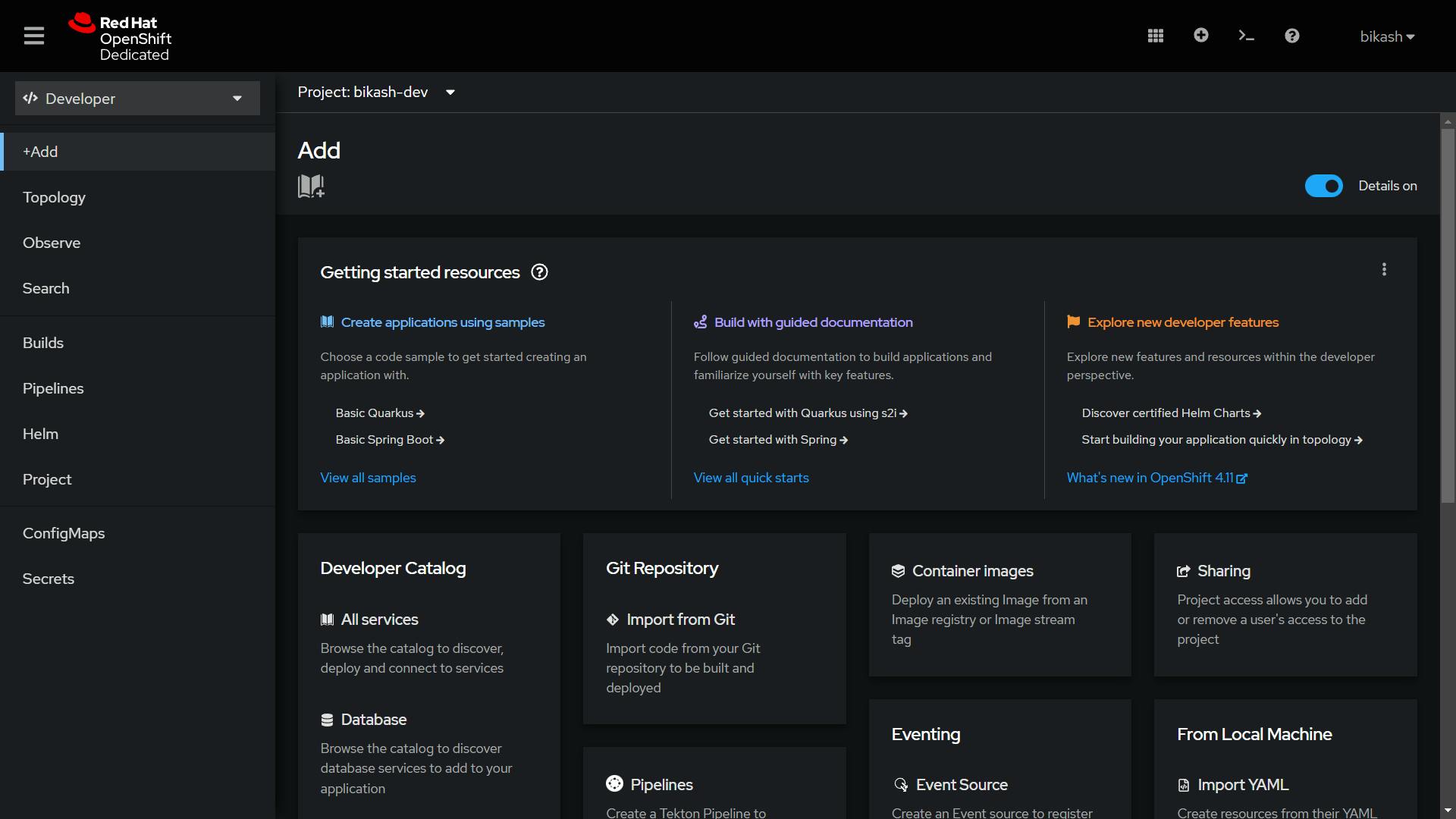Red Hat OpenShift Container Platform is a modular component and service set on top of Red Hat CoreOS and Kubernetes. RHOCP adds PaaS capabilities such as remote management, increased security, monitoring and auditing, application lifecycle management, and self-service interfaces for developers.
OpenShift Terminology
Infra node : A server that hosts applications. A node server containing infrastructure services like monitoring, logging, and external routing.
Console : RHOCP cluster that allows developers and administrators to interact with cluster resources.
Project : Allows the definition of user access control (UAC) to resources. resources with the same name can be used in different boundaries.
OpenShift Resource Types
Deployment and Deployment config (dc)
Deployment and Deployment config Both are the representation of a set of containers included in a pod, and the deployment strategies to be used. It contains the configuration to be applied to all containers of each pod replica, such as the base image, tags, storage definitions, and the commands to be executed when the containers start.
Build config (bc)
The process to be executed in the OpenShift project. Used by the OpenShift Source-to-Image (s2i) feature to build a container image from application source code stored in a Git repository. A Build config works together with a Deployment config to provide a basic but extensible continuous delivery workflow.
Routes
Represent a DNS hostname recognized by the OpenShift router as an ingress point for applications.

Networking in Red Hat OpenShift
OpenShift SDN(software-defined network)
By default, Kubernetes allocates each pod an internal IP address for applications running within the pod. Each container deployed in a Kubernetes cluster has an IP address assigned from an internal network that is accessible only from the node running the container. Because of the container's short-term nature, IP addresses are constantly assigned and released.
Kubernetes provides a software-defined network (SDN) that spawns the internal container networks from multiple nodes and allows containers from any pod, inside any host, to access pods from other hosts. Access to the SDN only works from inside the same Kubernetes cluster.
OpenShift makes external access to containers both scalable and simpler by defining route resources. A route defines external-facing DNS names and ports for a service. A router (ingress controller) forwards HTTP and TLS requests to the service addresses inside the Kubernetes SDN. The only requirement is that the desired DNS names are mapped to the IP addresses of the RHOCP router nodes.
Openshift Console

